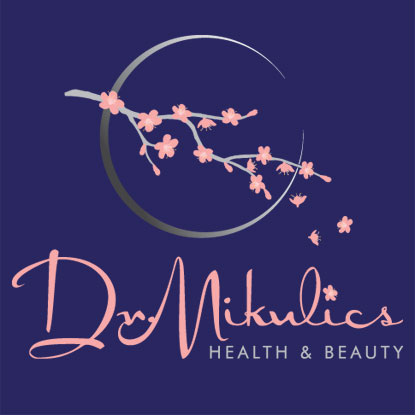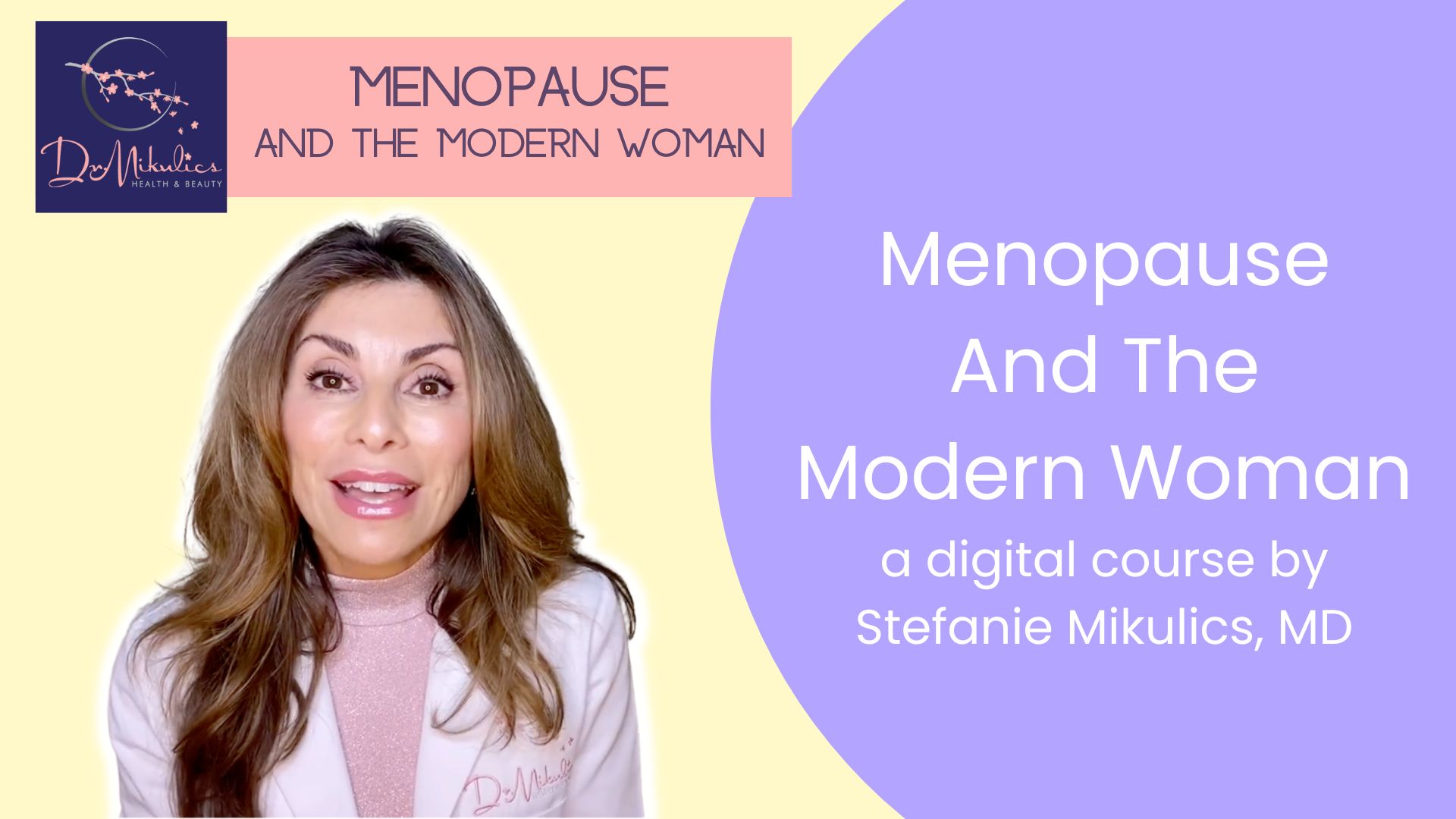Low Estrogen Guide
Estrogen affects appetite, weight, sleep, sex, fertility, mood, bone health, teeth, eyesight, cardiovascular health and basically every part of your body !
Some of the reasons why levels of estrogen drop are:
- Perimenopause or menopause
- Genetic disorder of the gonads or pituitary gland
- Pregnancy loss
- Initial postpartum time
- Breast-feeding
- Eating disorders, such as anorexia, bulimia
- Extreme exercise, or training
- Gluten intolerance
Dr. Mikulics’ new digital course, Menopause and the Modern Woman, is a series of videos where Dr. Mikulics offers insights to what you may be experiencing, or what you may experience in the future, with respect to your menopause journey.
Estrogen’s Impact on your Health
Changes in estrogen levels can directly impact various aspects of your health. Let’s dive a bit deeper into areas where this is most prevalent:
Appetite, Weight, and Body Composition: Estrogen plays a role in regulating appetite and metabolism. Changes in estrogen levels, such as those occurring during menopause or hormonal imbalances, can influence how the body stores and uses energy. Fluctuations in estrogen might contribute to weight gain, especially around the abdomen.
Sleep: Estrogen can influence sleep patterns, and disruptions in estrogen levels may lead to sleep disturbances.This is often observed during perimenopause and menopause when estrogen levels decrease,(and cortisol baseline starts to rise) contributing to issues like insomnia and poor sleep quality and being awake at 4am!
Sex and Fertility: Estrogen is crucial for maintaining reproductive health in both women and men. In women, it helps regulate the menstrual cycle and supports fertility. Lower estrogen levels, due to factors like perimenopause or genetic disorders, can impact fertility and sexual function. As estrogen levels decline, the vagina can loose elasticity and moisture resulting in painful sex.
Perimenopause and Menopause: As women transition through perimenopause and eventually reach menopause, progesterone, estrogen and even testosterone levels gradually decline. This natural process can lead to a range of symptoms, including hot flashes, mood changes, and changes in bone density, vaginal dryness, and sleep disturbances.
Genetic Disorders and Pregnancy Factors: Genetic disorders affecting the gonads (ovaries or testes) or the pituitary gland can disrupt hormone production, including estrogen. Pregnancy failure and certain postpartum times can also cause temporary fluctuations in estrogen levels.
Breastfeeding: During breastfeeding, estrogen levels are typically lower, which can lead to changes in menstrual cycles and, for some women, a decreased libido and even vaginal dryness. These changes are part of the body’s natural response to support lactation.
Eating Disorders and Extreme Exercise: Conditions like anorexia and bulimia, as well as extreme exercise or training, can impact hormone production and lead to irregular or absent menstrual cycles. These disruptions can result in lower estrogen levels and related health consequences including bone health.
Gluten Intolerance: While research is ongoing, some studies suggest a potential link between gluten intolerance (celiac disease) and hormonal imbalances, including disrupted estrogen levels. Addressing gluten intolerance through dietary changes might help improve hormonal balance.
Understanding how estrogen affects these aspects of health and recognizing the factors that can lead to decreased estrogen levels is essential for maintaining overall well-being. It’s important to work with healthcare professionals to address any hormonal imbalances and make informed lifestyle choices that support hormonal health.
Stretch and breathe
For the stretching routine, the breath work cycle will be an inhale for a count of 4, hold for a count of 1 and exhale for a count of 6 (you can play with it, but try to make your exhales longer than your inhales)
1. Stand up straight and raise your arms and clasp your hands above your head with an option to gently bend to the side; as you hold the stretch incorporate a 4-1-6 breath cycle and repeat 3 times on each side.
2. Keep knees soft and separated, hip distance apart.
Wide legged forward fold with small bend at the knees. Bend forward and grasp your elbows with your hands ( right hand grasps left elbow) .
Hanging like a ragdoll, swing from side to side if desired. Perform one 4-1-6 count breaths on each side.
3. Sit comfortably on the ground and cross legged position. Place your arms in the ground in front of you and gently lean forward. You can rest your forhead on your hands or stacked fists. Hold for three breath cycles.
4. Next lay on your back with knees, bent and move your knees slowly back-and-forth in a windshield wiper motion. Continue for three breath cycles.
5. Cross your right knee over your lap and gently move into a supine twist to the right. Slowly turn your head to the left and perform 2-3 breath cycles. Repeat on the opposite side.
6. Lay flat on your back arms down by your side, palms facing up and legs extended. (savasana pose)
Close your eyes for 4-5 breath cycles.
Food inspiration for Low Estrogen:
Berry Smoothie
- 1 cup organic soy milk. Such as West soy or Pacifica.
- 2 TBS ground flaxseeds ( golden)
- 1/2 cup frozen berries
- 1-2 favorite vanilla protein powder
- Ice
- 2-3 drops of liquid Stevia ( optional)
Blend in Nutribullet blender
Enjoy !





